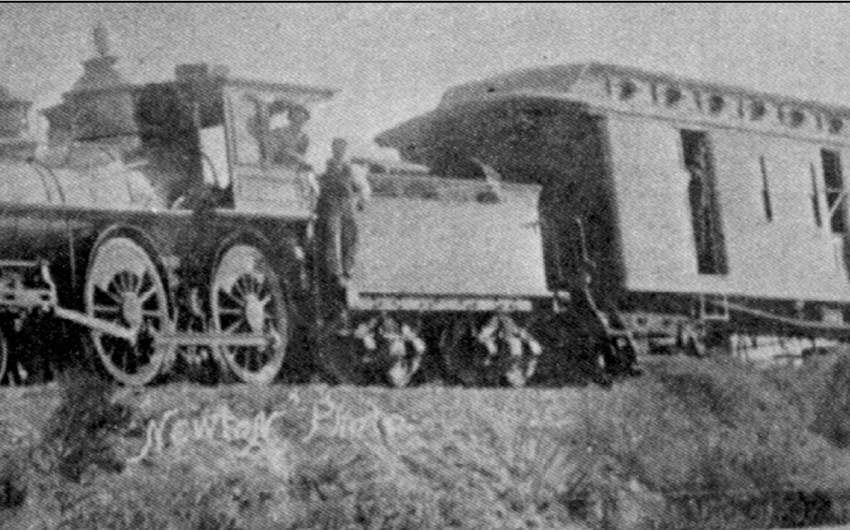‘Beppo’ | A Brief Moment of Cinematographic Fame
Flying A Silent Film Featured Location and Actors From St. Vincent’s Orphanage

In 1914, the blossoming motion picture production company Flying A Studios catapulted Santa Barbara’s St. Vincent’s orphanage into a dazzling limelight of international fame with the release of a one-reel silent film, Beppo. The heartwarming story, which featured one of the orphans in the lead role, reached a wide audience in North America, Europe, and Asia. Though brief, this brush with fame forever linked the orphanage to the history of silent-film cinematography in the United States.

Founded in Chicago in 1910, the American Film Manufacturing Company was a powerhouse of the silent-film era, which enjoyed the heyday of its success here in Santa Barbara. The company was more commonly known as Flying A Studios, an endearing nickname derived from its iconic logo of a winged “A.” The Flying A’s executives were particularly enamored with the city’s scenic vistas, turning Santa Barbara, Montecito, and the Channel Islands into a giant open-air production set. In 1912, the company invested significant resources to build a sprawling studio complex in the city. Sandwiched between State and Chapala streets, the Flying A took over an entire city block of West Mission Street. When construction was completed, the studio in all its architectural glory could easily rival the best movie production venues in the entire country.
The Flying A was a boon for the local economy. In the 1910s, the studio became the city’s largest employer, frequently hiring locals as extras on film sets. Through the years of the studio’s existence, Santa Barbara’s police constables, volunteer fire brigades, doctors, street vendors, and many others made regular (though uncredited) appearances in silent films. So, when the idea to produce a film about an abandoned child and a hapless father came to the desk of a film director and producer Henry Otto, St. Vincent’s orphanage was an obvious choice for the film’s settings.
Released in 1914, Beppo (the diminutive of “Giuseppe”) tells the touching story of a poor, happy-go-lucky Italian street musician and his daughter, Little Rosa. The film’s plot follows a series of unfortunate events that send Beppo to jail when he is wrongly accused of threatening the owner of a beautiful garden he stopped to admire. Unable to plead his case to a judge for weeks, Beppo languishes in jail while his only daughter is sent to an orphanage. There, she remains until an American couple, grieving the tragic loss of their own daughter to illness, adopts her. When Beppo is finally released from jail, he returns to his small house only to find it empty, his belongings sold, and his daughter missing. In his devastation, Beppo meanders aimlessly through the town when, by chance, he stumbles upon a house with a young girl resembling Rosa. To confirm his hunch, he plays a familiar melody on his accordion. A spark of recognition lights up Rosa’s face, culminating in a heartwarming reunion.
The silent film starred nationally renowned actors such as George Field, Ed Coxen, and Winifred Greenwood. Remarkably, the lead role of Beppo’s daughter, Rosa, was given to a girl who lived in the St. Vincent’s orphanage (then at 925 De la Vina Street), along with nearly 100 children under the care of the Daughters of Charity, an apostolic order of Catholic nuns who continue serving the Santa Barbara community to this day. The young actress’s chosen stage name was Jennie Vincent. Her real name, however, was Jennie Arrellanes. Born in 1904, she was 10 years old when she experienced the ephemeral stardom of the silent-film era of American cinematography. St. Vincent’s orphanage itself was featured prominently in the film as the set for one of the major scenes, creating a motion-picture time capsule of the building and people who inhabited it in the now-distant 1914.

Recognizing the special role of the orphanage in the film, the Flying A actors and producers invited all of the orphans and the Daughters of Charity to see Beppo at the studio headquarters before it was distributed to movie theaters across the nation and multiple locations in Europe and Asia. This act of kindness was well-documented in the local press. According to these newspaper accounts, approximately “a hundred orphan children and a dozen nuns” traveled to the Flying A Studios. The visitors were given a tour of the studio facilities and later saw the very first run of Beppo, with many children astonished at seeing themselves on a big screen. The transportation from the orphanage to the film studio was facilitated free of charge by the Santa Barbara & Suburban Railway Company, which ran a network of electric streetcars in the city until 1929.
Beppo received positive reviews in the local, national, and international press. Film columnists heaped praise on the lead actors, but it was Jennie Vincent’s “exceptional” performance that seemed to have struck a chord with many film critics. An article from the Santa Barbara Daily News and the Independent (the long name for a single newspaper in town from 1913 to 1919) dated February 6, 1915, encouraged readers to see the film, describing Beppo as a film of “many pleasing qualities, in which George Field takes the lead, splendidly assisted by one of the St. Vincent’s orphans.” On the same day, Santa Barbara’s Morning Press declared the silent film “the daintiest” of all the films produced by the Flying A Studios; while acknowledging the brilliant acting of Winifred Greenwood and Ed Coxen, the newspaper article concluded that the true “honors of the play fall to Mr. Field and the real orphan,” warning that “for this play it is well to be provided with handkerchiefs.”
What happened to Beppo, and can we see the silent film again? Unfortunately, it seems that for the time being, the film has been lost: Fragile and highly flammable, most silent-film reels were not created to survive the test of time. But all is not lost, and there is still a chance it may be found. While the search continues, the film stills will remind us of a brief moment of cinematographic fame for Santa Barbara’s orphanage.
Sergey Salushchev has a PhD in history from UC Santa Barbara. This article is based on his research in the archives in St. Vincent’s in Santa Barbara, the Chicago History Museum, the Santa Barbara Historical Museum (with special thanks to Head Archivist Chris Ervin), and UC Santa Barbara Department of Film and Media Studies (with special thanks to Professor Dana Driskel).
Premier Events
Sun, Dec 22
11:00 AM
Santa Barbara
Mosaic Makers Market – Holiday Market Finale
Wed, Dec 25
6:00 PM
Santa Barbara
FREE Contra Dance X-mas Day💃Corwin & Grace band6-9
Sun, Dec 22
11:00 AM
Santa Barbara
Mosaic Makers Market – Holiday Market Finale
Sun, Dec 22
2:00 PM
Santa Barbara
Santa Paws Holiday Party – A Howliday Celebration
Tue, Dec 24
2:00 PM
Santa Barbara
Brass Bear Christmas Eve Buffet
Tue, Dec 24
5:00 PM
Santa Barbara
Christmas Eve at the USSB
Wed, Dec 25
5:30 PM
Santa Barbara
Christmas Dinner at El Encanto
Fri, Dec 27
6:00 PM
Solvang
New Year Disco Ball Paint & Sip
Fri, Dec 27
9:00 PM
Santa Barbara
Film Screening: “Indiana Jones and The Last Crusade”
Sat, Dec 28
7:00 PM
Lompoc
Rosie Flores & Grey DeLisle + Special Guests LIVE
Sat, Dec 28
7:00 PM
Carpinteria
Family Comedy Night at The Alcazar
Sat, Dec 28
7:00 PM
Santa Barbara
The Temptations at Casa De La Raza
Sun, Dec 22 11:00 AM
Santa Barbara
Mosaic Makers Market – Holiday Market Finale
Wed, Dec 25 6:00 PM
Santa Barbara
FREE Contra Dance X-mas Day💃Corwin & Grace band6-9
Sun, Dec 22 11:00 AM
Santa Barbara
Mosaic Makers Market – Holiday Market Finale
Sun, Dec 22 2:00 PM
Santa Barbara
Santa Paws Holiday Party – A Howliday Celebration
Tue, Dec 24 2:00 PM
Santa Barbara
Brass Bear Christmas Eve Buffet
Tue, Dec 24 5:00 PM
Santa Barbara
Christmas Eve at the USSB
Wed, Dec 25 5:30 PM
Santa Barbara
Christmas Dinner at El Encanto
Fri, Dec 27 6:00 PM
Solvang
New Year Disco Ball Paint & Sip
Fri, Dec 27 9:00 PM
Santa Barbara
Film Screening: “Indiana Jones and The Last Crusade”
Sat, Dec 28 7:00 PM
Lompoc
Rosie Flores & Grey DeLisle + Special Guests LIVE
Sat, Dec 28 7:00 PM
Carpinteria
Family Comedy Night at The Alcazar
Sat, Dec 28 7:00 PM
Santa Barbara

























You must be logged in to post a comment.